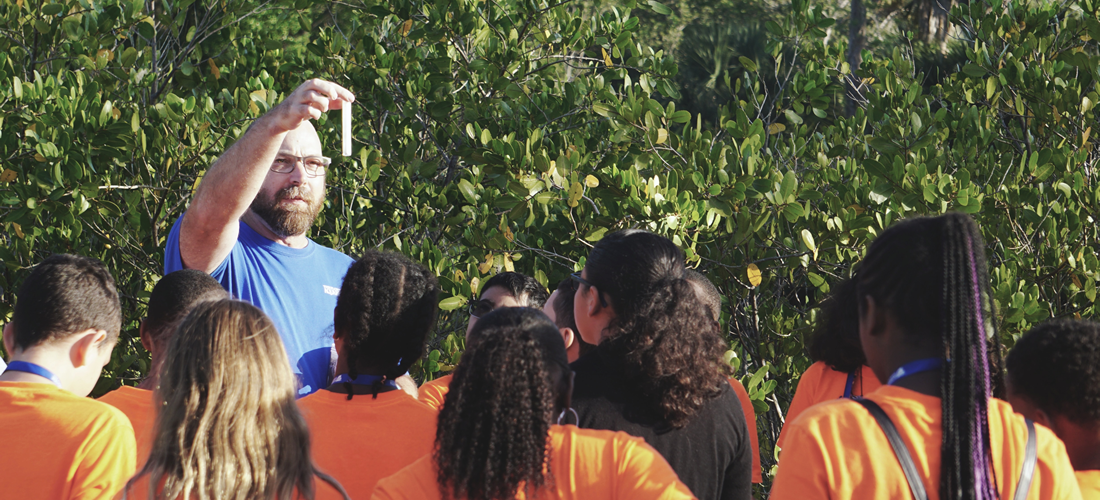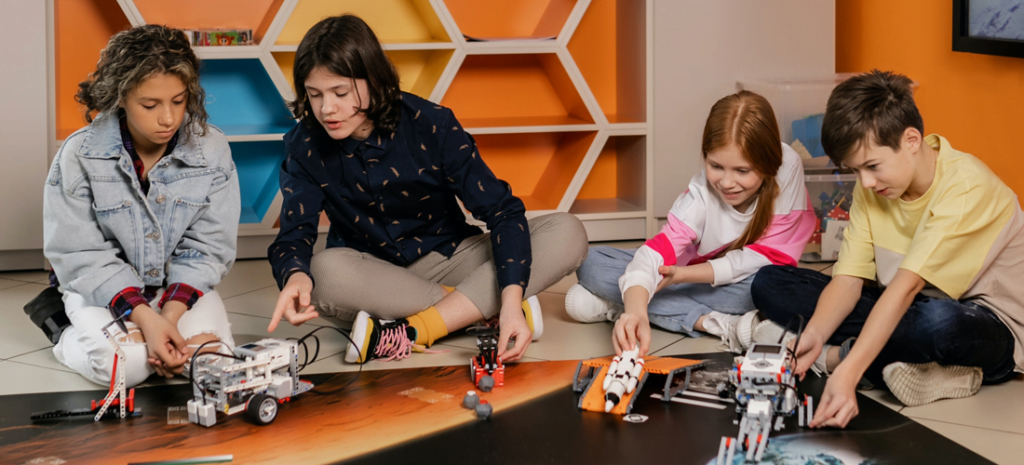Welcome to our deep-dive into the world of experiential learning! If you’re keen on revolutionizing the way you teach or learn, you’ve come to the right place. Experiential learning is a powerful tool that takes us beyond traditional lecture-style teaching, providing a hands-on approach that makes learning more tangible and meaningful. In this blog post, we’ll be exploring practical strategies to implement experiential learning, turning theory into practice. So buckle up and get ready to transform your learning journey.
So, what exactly is experiential learning? In a nutshell, it’s a process of learning through experience, or to put it in more practical terms, “learning by doing.” This concept involves directly engaging with the material being studied rather than just hearing or reading about it. It’s all about actively participating in the process and reflecting on the outcomes.
Experiential learning encourages students to step out of their comfort zones, think critically, and solve problems in real-world situations. This active involvement enhances understanding, boosts memory retention, and equips learners with practical skills that traditional teaching methods often overlook. It’s not just about digesting information; it’s about experiencing the journey of knowledge.
Strategies for Effective Experiential Learning
Effective experiential learning involves a range of strategies that can be tailored to different subjects, age groups, and learning environments. These strategies are designed to engage learners actively and promote critical thinking, problem-solving, and real-world application of knowledge. Here are some key strategies for effective experiential learning:
1. Hands-On Projects
Hands-on projects are a core strategy of experiential learning, providing learners with the opportunity to apply theoretical knowledge to real-world scenarios. These projects encourage the development of practical skills, fostering creativity, problem-solving, and critical thinking.
The benefits of hands-on projects are manifold. First and foremost, they promote active learning, an approach proven to enhance knowledge retention. Moreover, these projects provide a safe arena for learners to make mistakes, learn from them, and adapt their strategies, closely mimicking real-world situations.
However, there are challenges to be reckoned with. Setting up hands-on projects can be resource-intensive and time-consuming for educators. They also require a high degree of planning to ensure the learning objectives are effectively met.
To illustrate, consider a chemistry class where students are tasked with conducting a series of experiments. Here, the hands-on project not only enhances students’ understanding of chemical reactions but also hones their observation and analytical skills. Similarly, in a business course, a hands-on project could involve developing a mock marketing campaign, teaching students how to apply marketing theories while also fostering teamwork and leadership skills.
2. Service Learning
Service Learning, a vital strategy in experiential learning, marries community service to educational outcomes, allowing you to apply classroom theories in real-world scenarios.
Benefits are manifold. With Service Learning, you’re not just passive recipients of knowledge. You actively participate and contribute, fostering critical thinking and problem-solving skills. Exposure to diverse social and cultural contexts also enhances empathy, social responsibility, and global awareness.
However, Service Learning comes with its challenges. For instance, aligning community needs with learning objectives can be intricate, requiring thoughtful planning and coordination. Additionally, the success of such programs largely depends on the commitment and motivation of the learners, which can vary substantially.
Let’s consider some examples. A group of business students could partner with a local non-profit to develop a marketing plan, applying their theoretical knowledge while impacting their community. Similarly, healthcare students might organize a community health fair, providing much-needed services while gaining hands-on experience. These examples highlight how Service Learning seamlessly blurs the lines between education and practical application, making learning an enriching and meaningful experience.
3. Internships and Apprenticeships
Experiential learning is all about learning through experience, and what could offer more tangible experience than “Internships and Apprenticeships”? These strategies place you directly into the working world, providing a hands-on approach to understanding concepts, procedures, and industry norms.
Internships and apprenticeships have numerous benefits. They offer a real-world context in which to apply the theories and techniques learned in the classroom. You can develop significant professional networks, gain practical skills related to your field of study, and often, earn wages while learning. These experiences often lead to job offers after graduation as employers appreciate the value of candidates with practical experience.
However, there are challenges to consider too. Balancing an internship or apprenticeship with academic responsibilities can be taxing. Sometimes, these opportunities can be unpaid or low paid, which might not be feasible for everyone. Furthermore, finding an internship or apprenticeship that aligns perfectly with your career goals can be difficult.
Let’s consider a practical example. A business student may intern with a marketing agency over the summer. This provides not just exposure to the marketing industry, but also introduces them to client handling, campaign design, real-time problem-solving, and so much more that a classroom might not be able to offer. Similarly, an apprenticeship in carpentry would give a hands-on understanding of crafting furniture, reading blueprints, and working with different types of wood, which is a level of experience that cannot be replicated in a school workshop.
4. Simulations and Role-Playing
Simulations and role-playing are powerful strategies for experiential learning. These methods enable you, the learner, to immerse yourself in a realistic situation that mirrors real-world challenges. For instance, business students might participate in a simulation predicting market trends, while history enthusiasts could reenact a significant historical event. This engagement makes the learning process more relevant and dynamic.
There are several benefits to using simulations and role-playing in learning. Firstly, these strategies foster critical thinking and decision-making skills, since you need to analyze situations and make choices. Moreover, it promotes empathy, as you step into the shoes of different characters and understand their perspectives.
However, there are challenges too. It can be time-consuming to design and implement a simulation or role-play scenario effectively. Additionally, some participants may feel self-conscious about performing in front of their peers.
Despite these challenges, the advantages of simulations and role-playing in experiential learning far outweigh the drawbacks. So, the next time you’re in a learning situation, why not suggest a role-play scenario for a change? You might be surprised at how much you can learn from walking a mile in someone else’s shoes.
5. Outdoor Education
Outdoor Education is an effective strategy for Experiential Learning, offering learners a hands-on approach to knowledge acquisition. This method fosters a deep connection between learners and their environment by exploring concepts through real-world encounters and experiences. The benefits of Outdoor Education are numerous.
Firstly, it encourages learners to engage all their senses, thus enhancing understanding and retention of knowledge. Secondly, it offers opportunities to develop essential life skills such as problem-solving, teamwork, and resilience. Thirdly, it fosters an appreciation for nature, promoting environmental stewardship.
However, there are also challenges. Logistical issues such as weather conditions, access to suitable outdoor spaces, and safety concerns can pose hurdles. Furthermore, some learners might feel uncomfortable or anxious in an unfamiliar environment.
A practical example of Outdoor Education is conducting a biology class in a community garden, where learners can observe, identify, and study various plant species and their adaptations. Similarly, a geography lesson could be held at a local river bank, where learners could examine the impact of erosion firsthand. These immersive experiences allow for a richer and more engaging approach to learning that extends beyond the traditional classroom setup.
6. Project-Based Learning (PBL)
Project-Based Learning (PBL) is a dynamic approach to experiential learning that actively engages students in real-world and personally meaningful projects. Instead of traditional, lecture-based learning, you’re diving in, getting your hands dirty, and learning by doing. PBL fosters a deeper understanding of concepts and boosts critical thinking, problem-solving, and collaborative skills. Examples might include creating a business plan for a startup, designing an eco-friendly home, or organizing a community service project.
The benefits of PBL are significant. It stimulates creativity and innovation, encourages student autonomy, and fosters a more engaging and active learning environment. It also enhances the ability to apply learned principles in real-world scenarios – a valuable skill in today’s rapidly changing society. On the flip side, it can also pose challenges. PBL requires careful planning and organization from both teachers and students, can be time-consuming, and requires a substantial commitment to ensure the project’s successful completion.
So, let’s say you’re studying environmental science. Instead of just reading about sustainable practices, you’re tasked with designing a zero-waste system for your school cafeteria. You’re not just learning about sustainability; you’re actively creating a solution. Despite the challenges, the hands-on experience and practical skills gained through PBL make it an invaluable strategy in experiential learning.
7. Peer Teaching and Collaboration
Peer teaching and collaboration is an excellent strategy for experiential learning. It’s all about learning from each other, promoting active engagement and critical thinking. Through this approach, students become instructors and share their understanding of the topic, and in doing so, solidify their own knowledge.
One of the significant benefits of peer teaching is the fostering of a more relaxed learning environment. As peers understand each other’s perspectives better, they can explain concepts in a language that resonates with their group, leading to better comprehension. Additionally, this method encourages development of soft skills, like communication, leadership, and empathy.
However, challenges exist too. The effectiveness of learning could be compromised if the “peer teacher” has a flawed understanding of the subject. Other potential difficulties include unequal participation or lack of seriousness among peers.
Consider, for example, a group project on environmental conservation. Students can divide the topic, each researching a specific aspect like deforestation, global warming, or pollution. Afterward, each student will then teach what they’ve learned to the group. This way, they’re not only learning about their specific topic but also honing their teaching and communication skills.
8. Reflection and Debriefing
Reflection and Debriefing is a crucial component of experiential learning. This strategy provides a platform for learners to actively process their experiences, draw insights, and apply their understanding to new scenarios. Reflecting on experiences helps in consolidating knowledge and fostering critical thinking. It’s like looking into a mirror of one’s experiences and learning from them.
The benefits of this approach abound. First and foremost, it allows learners to evaluate their own performance and identify areas of strength and improvement. Secondly, it promotes the development of critical thinking and decision-making skills. Thirdly, it enhances the learning experience, making it more meaningful and personal.
However, the challenges cannot be overlooked. Reflection and Debriefing require time and commitment. Learners may sometimes find it difficult to introspect or articulate their thoughts and emotions. Additionally, it necessitates a safe and supportive environment where learners feel comfortable sharing their experiences and ideas.
Let’s consider a practical example: after a group project, a teacher organizes a reflection and debriefing session. The students discuss what they learned, the challenges they faced, and how they overcame them. They also evaluate their group dynamics, the effectiveness of their strategies, and plan for future improvement. Remember, the goal here is not just to complete the project, but to learn from the experience and apply those lessons in real-world situations.
Effective experiential learning combines these strategies, emphasizing the importance of reflection and aligning activities with specific learning objectives. When done well, it can significantly enhance student engagement and long-term retention of knowledge.
Key Principles of Experiential Learning
Experiential learning is grounded in several key principles that guide its effectiveness in promoting active, meaningful, and long-lasting learning experiences. Understanding these principles can help educators design and facilitate experiential learning activities effectively. Here are the key principles of experiential learning:
Active Participation
Active participation is a key pillar of experiential learning. It’s not about passively absorbing information, but rather about you, as a learner, actively engaging in the learning process. Think of it this way, instead of just reading about a concept, you’re thrown into a scenario where you need to apply that concept, analyze outcomes, and make adjustments if needed.
This active involvement fosters a deeper understanding of the material, as it requires you to not only understand the ‘what’ but also the ‘why’ and ‘how’. Moreover, it encourages self-reflection and critical thinking, skills that go beyond the classroom and are valuable in everyday life. So, remember, the more you engage, the more you learn.
Reflection and Debriefing
Reflection and debriefing are pivotal components of experiential learning. As you go through this learning process, taking the time to reflect on your experiences becomes crucial. Not only does it allow you to understand and internalize what you’ve learned, but it also helps in identifying areas of improvement.
Reflection isn’t just about looking back at what you’ve done; it’s about analyzing your actions, understanding their impact, and planning your future actions based on this new understanding. Debriefing, on the other hand, involves discussing the experience with peers or mentors, gaining insights from multiple perspectives, and consolidating the learning you’ve acquired.
It’s during this phase that real learning takes place – as you unpack your experiences, connect them with theoretical concepts, and weave them into your cognitive structures. So, remember, when it comes to experiential learning, don’t just do it, take the time to reflect and debrief!
Application of Prior Knowledge
One of the fundamental principles of experiential learning is the application of prior knowledge. It’s all about taking what you already know and using it in new, real-world situations. Imagine you’re learning to cook. You’ve read all the cookbooks, watched all the cooking shows, and even practiced some techniques.
But it’s not until you’re in the kitchen, applying your knowledge to prepare a meal, that you truly learn to cook. Similarly, experiential learning encourages you to apply theoretical knowledge to practical situations. So, don’t shy away from new experiences. Dive in, use what you’ve learned, and don’t forget to reflect on the outcome.
Problem-Solving and Critical Thinking
Problem-solving and critical thinking are key principles of Experiential Learning. When you’re engaged in experiential learning, you’re not just passively absorbing information but actively applying it to real-world problems.
This hands-on approach pushes you to use critical thinking, as you must analyze the problem, develop potential solutions, and then implement and evaluate your results. Through this process, you’re developing essential problem-solving skills, learning to adapt to new challenges, and exercising innovative thinking.
This isn’t just about learning a concept; it’s about understanding its application in diverse contexts. So, you’re not just gaining knowledge, you’re mastering the art of problem-solving—a valuable skill that transcends beyond the learning environment and is highly sought after in the professional world.
By incorporating these key principles into the design and facilitation of experiential learning activities, educators can create more engaging, meaningful, and effective learning experiences for their students.
Conclusion
Experiential learning is an engaging approach to education that deepens our understanding and enhances our skills through real-life experiences. By actively engaging in real-world tasks, you’re not just learning; you’re living the learning process. From team projects and internships to study abroad programs and service-learning, these strategies provide a vibrant canvas for your growth and development. The future of experiential education looks promising, as it continues to evolve, keeping pace with our ever-changing world. It’s the perfect time to immerse yourself in this dynamic field and reap the benefits.
You might also like:
- 10 Proven Self-Regulated Learning Strategies to Empower Your Learning
- 10 Chunking Techniques for Memory Mastery


